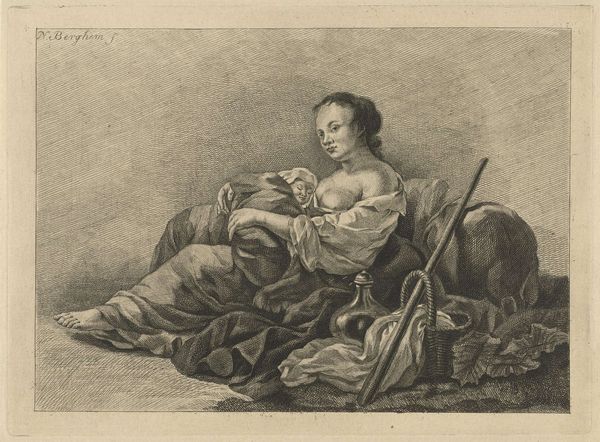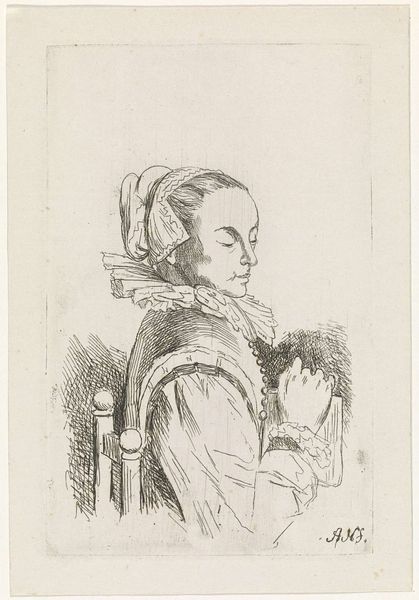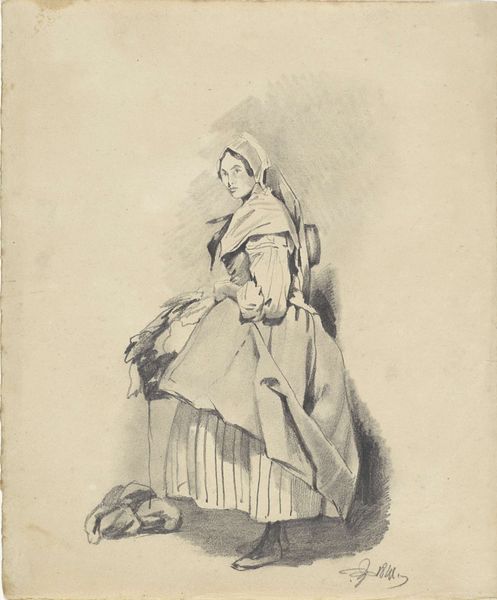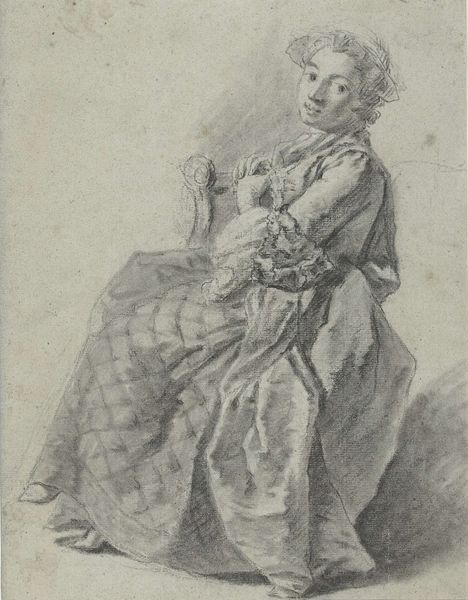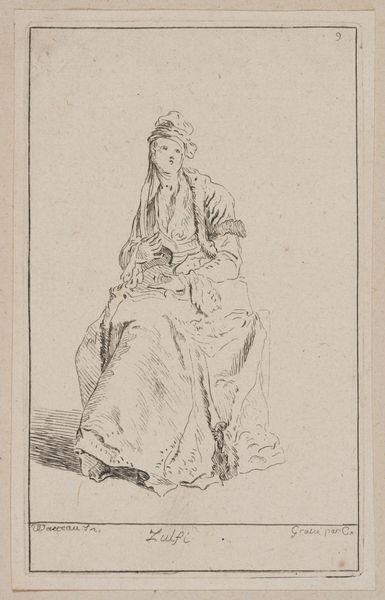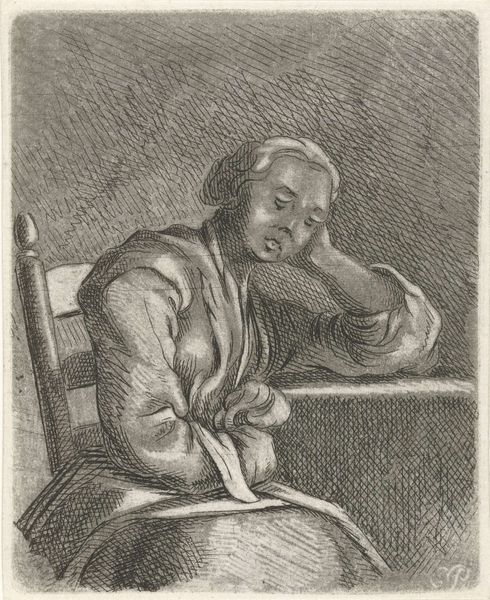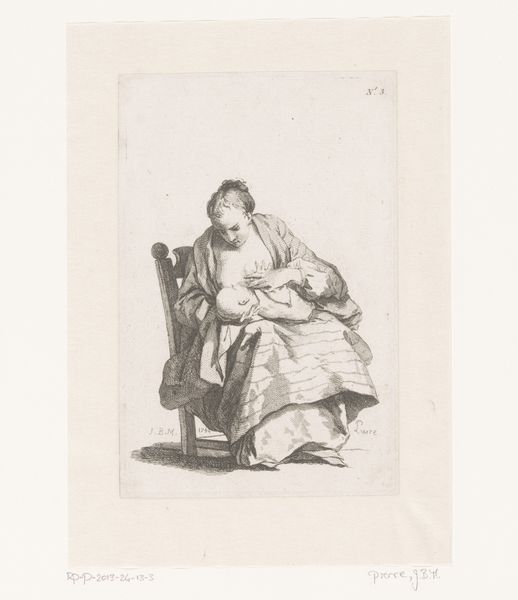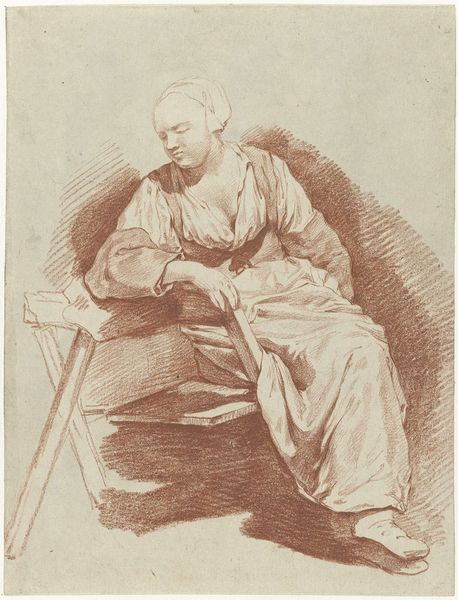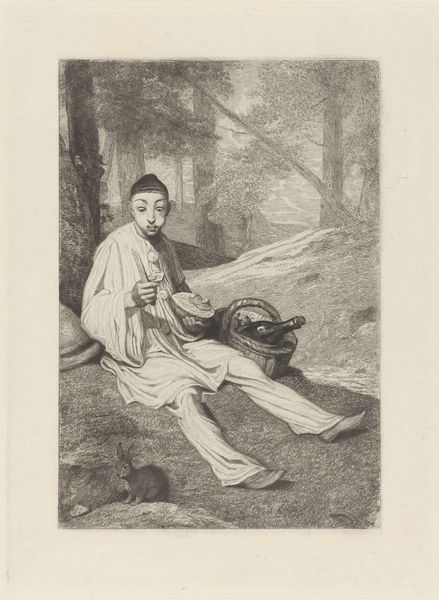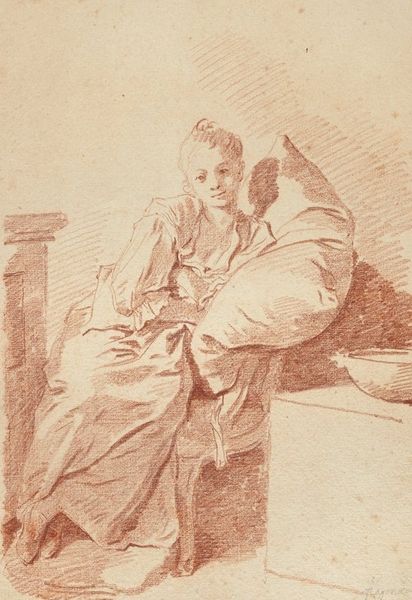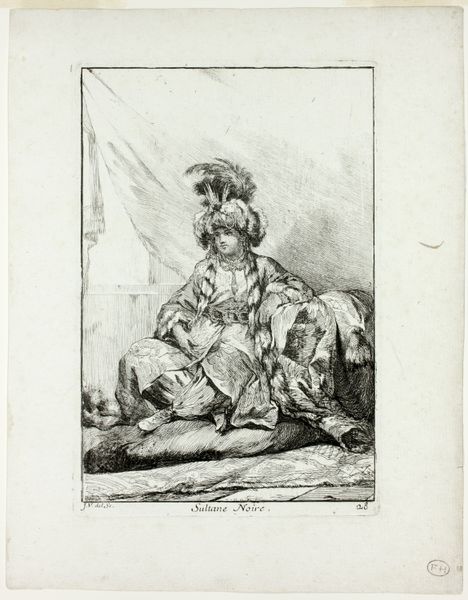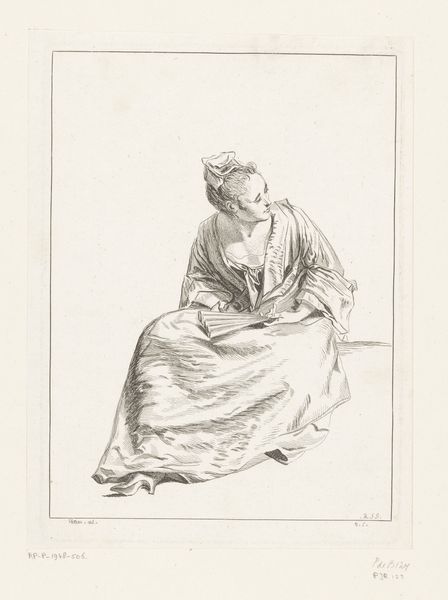
Dimensions: height 205 mm, width 281 mm
Copyright: Rijks Museum: Open Domain
Editor: So, this is Pieter de Mare's "Herderin met kind" – "Shepherdess with Child" – created between 1768 and 1796. It's an engraving. There's a distinct focus on the figures, but the overall effect seems quite subdued. What jumps out at you when you look at it? Curator: Immediately, I see the artist's choice of engraving as a powerful act. This wasn’t simply a reproduction; it was a decision to participate in a print market democratizing imagery. We have a carefully constructed representation of pastoral life, packaged for consumption. What textures and patterns are created by this printmaking process? Editor: The fine lines of the engraving create this overall softness, especially in the rendering of the clothing and skin. I'm also noticing the distinct contrast in shading, almost like the material is both present and not. How do you read that? Curator: Consider the contrast then; this is the labor of the printmaker shaping how this scene of labor – being a shepherdess – is viewed and valued. The materials surrounding the woman suggest rural simplicity, but the means by which we consume that image is fundamentally tied to urban economies and networks of distribution. We can trace social contexts based on the production itself! Editor: Ah, that makes a lot of sense. Seeing the artwork through that lens brings forth other implications... So, while we are looking at this seemingly simple portrait of mother and child in Baroque style, we are in fact looking at the dynamics of material consumption. Thanks! Curator: Precisely. And by questioning the methods of production and reception, we understand how these images, seemingly innocent, were and are active agents within broader cultural exchanges.
Comments
No comments
Be the first to comment and join the conversation on the ultimate creative platform.
